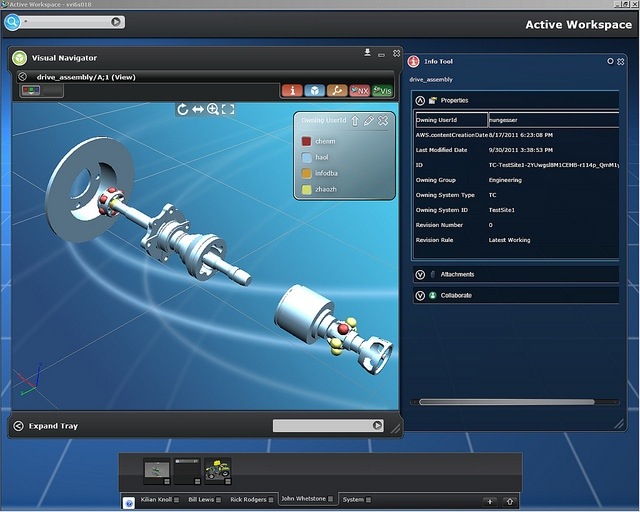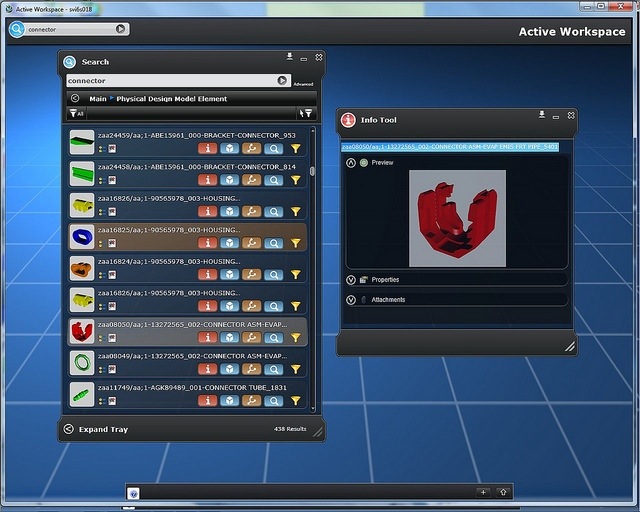Latest News
May 8, 2012
The past challenge for manufacturers was a lack of information: Is this material strong enough for my product? Is this supplier in compliance? But the present challenge is the opposite. We have too much data, too much to review, too much to evaluate, too much to make sense of for decision making.
“Big data technologies describe a new generation of technologies to extract patterns and insights from large volume of data,” said Chuck Grindstaff, CEO and president of Siemens PLM Software, during his keynote address to PLM Connection 2012 Conference attendees.
As revealed in the last several years, Siemens PLM Software envisioned solving the big data problem with HD PLM, a way to visualize enterprise data and project data as layers of information on assembly models. Read “NX Goes HD,” June 2010.
Active Workspace, a product with a search-centric interface from Siemens PLM Software, is expected to fulfill the promise of HD PLM and bring it to a wider audience.
Thanks to Google, the search window has become the universal mechanism for soliciting and receiving information. When you log into Active Workspace, the first thing you see will be a search box. Upon performing a search, you can narrow down your search results through a series of logical filters and attributes (for example, by release date, by supplier, by material, and so on).
Active Workspace is an adjunct product to Siemens PLM Software’s Teamcenter, according to Bill Lewis, the company’s product marketing manager for Active Workspace. In other words, it won’t be offered to those who are not using Teamcenter. It is, however, not a plug-in to Teamcenter; it stands on its own as a desktop application.
Active Workspace is an access point to delve into product databases, so it requires some connectivity and configuration tasks to set up (Siemens PLM Software plans to offer integration and consultation services on that front). The product is built on open architecture, so it can be connected to databases beyond Teamcenter, Lewis said.
“What it allows you to do is to search for and find business objects, so [a CAD model] is not necessarily the interface you use to query,” Lewis explained. (What you are searching for, for example, may be found in a system diagram, or a requirements document, in which case a CAD model is not essential.)
Active Workspace uses Solr, an open source search technology to query and index file attributes, which gives the application a way to swiftly return search results.
Lewis revealed, “As we developed the interaction model, one of the things we kept in mind was touch-based UI. We made [Active Workspace] to be easily transferable when we wanted it to be a mobile app.”
An integrated JT viewer serves as a way to display 3D data inside Active Workspace. Though it works as an access point to Teamcenter and NX data, Active Workspace runs as a separate application, allowing those who do not regularly interact with CAD and PLM systems to gain access to a greater volume of product lifecycle data. The simple search-based interface and filtered display methods are calculated to appeal to users outside engineering and design departments.
For more, watch Siemens PLM Software’s demo video.
Subscribe to our FREE magazine, FREE email newsletters or both!
Latest News
About the Author
Kenneth Wong is Digital Engineering’s resident blogger and senior editor. Email him at [email protected] or share your thoughts on this article at digitaleng.news/facebook.
Follow DE







